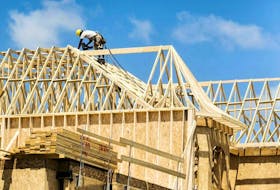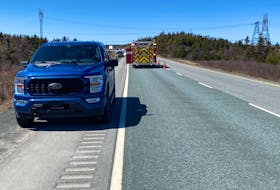You’ve heard the stories of drones coming too close to people and their homes, entering controlled airspace and causing concern at outdoor events and gatherings.
Some people have responded by trying to knock the drone from the sky with sticks and even brooms, or tossing an object at it. In extreme cases, gunshots have been fired at drones coming too close for comfort.
Earlier this week, departures at Heathrow Airport in London were temporarily stopped after drones were sighted in the area.
How to regulate and control drone operators has been the subject of debate since the growing popularity of the remote-controlled aircrafts in recent years.
On Wednesday, Transport Canada announced new regulations that apply to remotely piloted aircraft systems (RPAS) — commonly known as drones — that weigh 250 grams up to and including 25 kilograms.

The new rules will become effective across the country on June 1.
Among the regulations is that an operator will have to pass an online exam to get a drone pilot's certificate; drones will have to be registered (at a fee of $5) and marked with the registration number; there will be a minimum age limit of 14 for basic operations and 16 for advanced operations; and drones will have to be kept below 400 feet above ground level and stay away from air traffic.
Violators could be subject to fines in the thousands of dollars.
Transport Canada says a growing number of incidents involving recreational pilots have resulted in a growing risk to aviation safety as well as to people on the ground. In Canada in 2014 there were 41 incidents reported, and in 2017, there were 136 incidents.
Jeff Ducharme, a journalism instructor at College of the North Atlantic in St. John’s who teaches a drone journalism course, says he is encouraged by the new regulations.
“I think what Transport Canada has done is quite reasonable and responsible, but enforcing these regulations is going to be the tricky part,” Ducharme said. “Do police officers have time to enforce these regulations? How you are going to enforce these is key.”
Ducharme said it was originally thought that education about safe operating practices for drones would help, but time has proven otherwise.
“Those on YouTube who strap Roman candles to the skids of their drones and chase people with them, or the people who fly near airports to get video of a plane landing, they don’t follow the rules,” he said.
“Enforcement is the key. Hit them in the wallet and hit them hard because if you make it too expensive for these people to fly, they are not going to fly.”
Telegram photojournalist Keith Gosse’s drone videos on The Telegram website have been viewed thousands of times.
As a certified drone operator, Gosse has come across others using drones improperly and has reported cases to authorities.
“The problem is that we’ve had so many recreational operators doing things they shouldn’t be doing and causing problems for the people who are actually following the regulations. It’s frustrating.”
— Keith Gosse, Telegram photojournalist and certified drone operator
Gosse agrees that strong regulations and fines for breaking the rules are the best deterrent.
“If people don’t get caught for breaking the drone regulations, they will keep doing it,” he said. “The new regulations are a definite a step in the right direction.”
Ducharme said the new regulations will be adapted into the course material.
“A lot of journalism students are looking at drone technology as complementary to a story,” he said. “Drones aren’t to be used to look for stories, they are used as part of the story. For most media outlets it levels the playing field as they use it to get aerial shots for a story. Where before it would cost $1,000 per hour to hire a helicopter, now they can buy a drone for $1,500.”
One of Gosse’s most well-received drone videos is of the SS Kyle grounded near Harbour Grace.
“What (a drone) does is it enables me to give people a whole view of places they have never seen before,” Gosse said. “With the Kyle, most people only ever get to see it from shore. The aerial drone perspective gave detail of what the ship is like and the shape it is currently in.”
RELATED STORIES:
Ottawa taking measures to protect airports as new drone rules announced
Holiday chaos as drones shut London's Gatwick Airport
RELATED LINKS:
Drone captures scenic video of the Cape Shore
Abandoned village, La Manche suspension bridge captured in drone video








